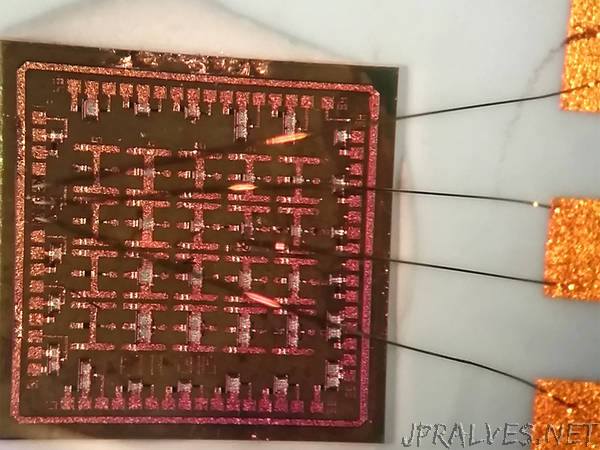
“Mixer IC works at 500 degrees Celsius, so it can take the heat on the surface of Venus, inside a natural gas turbine, or in the bowels of a 6-kilometer deep oil well
There are still some places the Internet of Things fears to tread. Researchers at the University of Arkansas and the KTH Royal Institute of Technology, in Sweden, are building a radio for those places. This month, in IEEE Electron Device Letters, they describe a mixer, a key component of any wireless system, that works just fine from room temperature all the way up to 500 ºC. It’s the first mixer IC capable of handling such extremes.
IEEE Fellow and Arkansas professor of electrical engineering Alan Mantooth specializes in electronics for extreme environments. Of several projects “one of the more sexy is trying to put a rover or some sort of instrument on [the surface of the planet] Venus that will last for more than two hours, which is the current record.” An high temperature for average day on Venus reaches 467 ºC. But it’s a sulfuric heat.
You don’t have to travel across space to find some pretty hellish places. Here on Earth, there are locations like the inside of a natural gas turbine generator, a hotspot Mantooth and his colleagues are particularly interested in. Currently, generators are maintained by shutting them down at scheduled intervals—whether parts like the turbine blades need attention or not. Unexpected outages, though mitigated by redundant turbines, can cost energy suppliers about US $1 million per day, he says. Turbine makers “would rather have sensors inside to tell them when [parts] are starting to wear.” That way, they can avoid unplanned outages and set maintenance intervals based on actual field data. But those sensors would have to live near a stream of exhaust as hot as 1000 ºC, while clinging to a blade that’s spinning so fast that the sensor experiences forces approaching 14,000 gs.
The Arkansas team is also working on sensors for the inside of diesel combustion chambers so computers can better control a diesel engine’s efficiency. And they’re exploring power electronics for actuating a drill bit at the bottom of an oil well, where temperatures can reach 150 ºC.
For all these applications, silicon is probably not your best choice of semiconductors. Its bandgap is so narrow that such high-heat environments can kick electrons around so that current flows even when it shouldn’t. Materials with bigger bandgaps, such as gallium nitride and silicon carbide, don’t have that problem. The Sweden-Arkansas team chose silicon carbide for its bandgap and because it has good thermal conductivity. “It doesn’t sit there and cook itself,” says Mantooth.
The mixer IC was designed by professor Ana Rusu’s team at KTH, packaged by Mantooth’s group in Arkansas, and then tested by Rusu’s group. It downonverts a 59-megahertz RF signal to a 500 kilohertz one to allow signal processing.”
